The war has begun. Quite literally. The final release of Windows 7, the latest (and greatest?) version of Windows is just months away. We laid our hands on the RC (release candidate) available for free on Microsoft’s website, and took it for a spin against Mandriva 2009.1 Spring. Who won? The results are most surprising!
The hardware platform
We tested out both the operating systems on a pretty standard multimedia PC. The specs of the system are given below:
- Processor: Intel Core2 Duo E7200 @ 2.53GHz, 45nm Core Fabrication, without Intel VT.
- Memory: 2GB Transcend DDR2-800MHz JetRam
- Chipset: nVidia nForce 630i MCP
- Graphics (Onboard): nVidia nForce 630i/GeForce 7100
- Graphics (PCIe): nVidia GeForce 9400GT
- Networking: nVidia nForce MCP73 Networking Controller (Realtek RTL8139 Chip)
- Sound: Realtek AC’97 8 Channel High Definition On-board Audio (ALSA: Intel_HDA)
- Hard Disk (Primary): Seagate Barracuda 7200.11 320GB SATA2
- Hard Disk (Secondary, Hosting our OSs): Western Digital Caviar 160GB 7200RPM SATA2
- Display: Samsung SyncMaster 510N (15” or 38.1.cm, LCD-TFT, VGA Connection)
- Mouse and Keyboard: Microsoft Digital Media K/B and Microsoft Wireless Optical Mouse
Now that you know the specs of our system, it’s time to move on!
The packages compared
Both Windows 7 RC and Mandriva 2009.1 Spring (Free) come on single-layer DVDs. Windows 7 is a smaller download at 2.35 GB, whereas Mandriva weighs in at 4.34 GB, or 1.99 GB more. Both are ISO images, and have to be burned onto a disk.
Installation: Head-on
We started out by creating two empty unformatted partitions of 25 GB each on the shiny new caviare. Then, after starting the countdown timer, we started the computer with the Windows 7 RC DVD in the drive. A little while later, a plain text message greeted us: “Press any key to boot from CD or DVD” with a growing number of dots after it (it’s supposed to stay five seconds, after which it automatically boots from the hard disk). After a jab at the Enter key, the screen went blank.
Not for long. Just a split second later, a screen with the message “Windows Is Loading Files” along with a progress bar appeared. It then completed a graphical boot screen and displayed four balls converging into a Windows flag and a lot of HDR effects. The screen was set at the full 1024×768 pixels resolution, with 32-bit colour. Too little, too late: we already have this animated graphical boot capability in RHGB, which was demonstrated by Fedora 10.
The installer took almost a minute to start, which is way too long for our liking. Anyway, once it was up, a screen came up asking for language and locale selection. We selected English (India) as our language, and let the other settings be. Then we hit OK. A second screen came up, with a big ‘Install Now’ button amongst other things. We hit that as well. The set-up program thus got initiated, taking another minute to load. What’s with Windows and speed?
The first screen showed us a licence agreement. You know what Microsoft EULAs are! Anyway, without accepting it, we could not try it out, so we accepted it with a heavy heart. The next screen threw up a surprise: it was meant to ask us whether to upgrade or perform a new installation. Typical of Microsoft confusion-creating terminology, the new installation option is called ‘Custom’. But accompanying it was a common Microsoft Bug—the upgrade option was enabled, and below it was clearly stated, “The Upgrade option is enabled only when you are installing Windows from within an Operating System that can be upgraded to Windows 7.”
We hit the Custom button. A partition selection screen showed up, where we selected Disk 1 Partition 0 (which means the first partition of the second disk, which GRUB guys will know :-)). It was unformatted (as we had prepared it). We hit Next, and whoa, installation had started before we knew it. Installation took a long time, and at the end of it, the thing rebooted the PC into Windows 7. The first run wizard then asked for a user name, a password, and most annoyingly, a password hint. Now Microsoft is just slashing open a security hole by enforcing that feature. It put the PC through its paces, ran some hardware detection, asked what type of network we were in, and finally took us to the desktop.
Over the entire procedure, the set-up program had installed the Windows Boot Manager onto the first partition superblock and written a new MBR chainloading the first partition, thus effectively destroying GRUB. Windows XP was detected, but no sign of Fedora 10 remained. The entire procedure took 16 minutes plus user interaction time. Way too slow. On the upside, the Windows set-up looks very sleek and superbly streamlined, and it was a pleasure to actually install Windows, save the nasty Fedora busting surprise at the end (but it wasn’t supposed to work anyway).
Mandriva was a whole new story. We put the DVD in, and the first thing we knew was that a cool blue ‘fishy’ menu with some menu items for installing, rescuing, checking our hardware and booting from the first hard disk, had come up. We would have preferred a “Press any key…” prompt to save the overhead of starting the CD boot manager, however. We just hit Enter, and after a text-mode phase the GUI installer started up.
The Mandy installer doesn’t look anywhere near as sleek as Windows 7’s, and at first glance has twice as many steps compared to Windows’ set-up. The installer is arranged rather like Windows XP’s, with a list of steps stacked in a sidebar at the left of the screen, and wizard dialogs exactly like the WINNT32.EXE installer, only a lot prettier. The first screen is for selecting the system locale, of course. No English (India) here, so we had to settle for English (British). We accepted the licence agreement (which informed us that there was no warranty) and then moved on to partitioning. Partitioning manually was a confusing affair for a new user, compared to Windows 7. Then on, it was smooth sailing.
After selecting the root partition, we were asked if we wanted to configure additional repositories (for pulling in updated software from the Internet during installation). This was a feature of the Windows set-up since the days of Windows XP (Dynamic Updates), but was absent in the Windows 7 RC set-up. Anyway, we chose not to use these repos but rather pull the packages from our DVD. Then we were asked if we wanted a GNOME desktop or a KDE. We chose KDE, since it is more Windows like (though a bit more advanced), and is visually better. And then, installation started in full swing.
After the package installation was complete (throughout the progress one could choose to see a slideshow of Mandriva’s other products or read a text output showing each package’s install process), we were taken to the user configuration screen where we were asked for the root (administrator) password, and told to furnish the details of our user account. Here, there was no enforcement to furnish a password hint, and you could use a username other than your full name—two features absent in Windows and two features we really like. We were then asked where we’d like our bootloader to be installed—we chose the MBR of our first hard disk (the one with 320GB)—and then we were taken to the systems configuration screen where we could configure every aspect of the system prior to first boot.
We chose Asia/Calcutta as our time zone and India as our location. There was no need to tweak the bootloader, but we did that just for the sake of giving more descriptive names to the items rather than “linux”, “windows1” and “windows2”. Both our Windows installations were detected, as well as Fedora Cambridge (which had disappeared after installing Windows 7). Video configuration was interesting, where the system defaulted to “nVidia Cards not working with nv” (we were using the 9400GT; the onboard was disabled in our BIOS—and more on that later). That was all. We went through the next step (which asked us if we wanted to install security updates, to which we said, ‘No’) and then the PC rebooted, and Mandriva went through a first run wizard, somewhat like Windows XP’s ‘OOBE’ (out of box experience).
| Ratings | Windows 7 | Mandriva 20091 |
|---|---|---|
| Looks | 8 | 5 |
| Speed | 16 minutes + user time | 11 minutes + user time |
| Functionality | 4 | 7 |
| Comments | Minimalist and pretty, sacrificing functionality | Rather full blown, with high functionality, sacrificing looks |
| Overall user experience | 5 | 6.5 |
Out of the box experience, and looks: Eye to eye
The out of the box experience on Windows 7 was much better than Mandriva, which is very surprising considering that even Windows Vista with Service Pack 1 lost by a mile. We’ll see how.
The first boot on Windows 7 was a big surprise, seeing a full resolution of 1024×768 at 32-bit colour, which is the native resolution of our 15 inch or 38.1 cm flat panel. Even Vista gave only 800×600 at 24-bit colour. Closer inspection revealed that the nVidia GeForce 9400GT was working with full DirectX 11 support. It turns out that Microsoft ships Windows 7 with modified nVidia Forceware drivers that enable support for DirectX11 (the Forceware drivers on nVidia’s website are still for DirectX10, but this is slated to change by the time you read this). Our Realtek AC’97 HD Audio worked as well, so did our Conexant CX11252 voice and fax modem (I still have a dial-up connection as a back-up, and I don’t use fax, though I can). Windows also recognised our keyboard’s multimedia hotkey caps (in previous versions I had to download and install IntelliType, a Microsoft add-on software; looks like Microsoft hates its own hardware), though only partially. The volume keys, playback control, mail and Web keys work; while the zoom slider, My Favourites, My Documents, My Pictures, My Music and Messenger keys don’t.
Windows 7 scores a perfect 10 for its looks. Microsoft’s taken Vista’s Aero to its next level, and added some features. They’ve removed some as well, like Windows Flip 3D (which I quite liked). One feature I quite like is Aero Shake, where you just hold a window by the Windows Manager and shake it, and all the other windows minimise, leaving only that one. The sidebar is now gone, and has been replaced by gadgets directly on the desktop, a la Konfabulator and KDE4. They call it the Windows Gadget Platform. Aye, refer to the photo gallery on the previous page to find out more.
When you first boot up Mandriva 2009.1, you’ll be forgiven for thinking that Mandriva is a visual disaster. The culprit is La Ora, the artwork stack of Mandriva, which makes it look like it’s from the last century. We did some handiwork and switched our Mandriva back to KDE4’s default look—Oxygen. It probably is a mere coincidence, but Windows 7’s and KDE4’s desktop look very similar: a transparent, big, iconised toolbar, widgets on the desktop… It’s another co-incidence that Mandriva and Windows 7’s default wallpapers represent a single fish in water. There are no glass borders on Mandriva, and the text won’t look as good as on Windows (as subpixel rendering is patented by Microsoft as part of its ClearType technology). No Aero Shake as well. However, KWin’s composting effects (now enabled by default if a good enough GPU is found) cover much more effects than Windows 7. These effects are more soothing than the ones on Windows, but the total effect is lost because of the lack of enough transparencies. And while Windows makes your windows look like glass panels, KDE makes them look like, umm… better.
Another feature was wallpaper slideshows. KDE has it, but it’ll cycle over all the wallpapers in your KDE wallpaper registry (or you can add your own ‘Pictures’ folders there). Over at Windows’s stable, there are huge collections of high-resolution images grouped into categories, such as scenes, cartoons, nature, etc. You select one such category, and your wallpapers will cycle over images from it. A category (called a theme) will also change the window border hue (no colour, because it’s transparent), and the sounds.
Hardware detection on Mandriva was typical of a Linux platform. Everything except our voice modem (it’s a software modem, and thus Windows specific) and the multimedia hotkeys on our keyboard was detected. Although our nVidia card was detected, drivers had to be downloaded from the Internet. That’s because we’re using the ‘free’ version, which means the DVD has only Free (as in freedom, not beer) software. The nVidia Forceware drivers are not free. But it wasn’t at all hard to set it up, however. We could enter Mandriva Control Centre (Mandy’s Control Panel) and just start the X configuration tool, and it asked us that since there were proprietary drivers available, would we like to install them? We said, ‘Yes,’ and after a few downloads and a logout later (no reboot, mind you—Linux doesn’t need them), our 9400GT was working like a charm. The Mandriva 2009.1 Spring One Edition comes as a live CD and includes the proprietary drivers as well, so everything works out of the box.
| Ratings | Windows 7 | Mandriva 20091 |
|---|---|---|
| Looks | 10 | 7 (when we reverted to the default KDE4 look) |
| Responsiveness | 7 | 8 |
| Speed | 6 | 8 |
| Out of box hardware support | 9 | 9 |
| Overall user experience | 8 | 6 |
Don’t be fooled, however; Mandriva still looks a million times better than Windows XP.
Functionality
This is where all good things about Windows 7 come to an end. Let’s see…
Windows 7 takes up an elephantine 6.5 GB space. It dumps everything on the hard drive, and then disables three quarters of all the features waiting for us to enable them. Gazillions of unused drivers lie on our hard drives, taking up space and slowing down the boot process. And at that amount of space consumption, we’d expect some goodies to come along with Windows. We were left shocked.
Apart from Windows Media Centre, Windows Media Player and Windows Internet Explorer, all the software that we used to get bundled earlier is now gone. No Windows Mail, no Movie Maker, no Meeting Space, no Messenger, no DVD Maker, no Photo Gallery… nothing! We discover that we need another 173 MB download in the form of Windows Live Essentials to get anything at all working. Forget an office suite; you’ll have to pay Microsoft close to Rs 17,000 to lay your hands on one. Or settle for a feature stripped one at Rs 5,000. That’s still a lot. Simple CD burning can be done with Windows Explorer, but no Authoring (VCDs, Video DVDs and Audio CDs) and no ISO burning. And wait till you hear this: Windows Live still doesn’t have a DVD Maker, and its Movie Maker is dysfunctional, at best.
Mandriva is aeons ahead. It includes a complete office suite, with more functionality than MS Office 2003. It’s got the best audio player known to mankind, by the name of Amarok. A serious video player is lacking, but SMPlayer can be gotten from the repos. It has Kopete (instant messenger), KDENlive (a video editor), Gwenview (a photo viewer), The GIMP (an image composer with the same functionality as Photoshop, even with proper CMYK support) and a whole load of other software. Space consumption? A mere 2.5 GB when first installed.
So how can a 4.34 GB DVD install only 2.5 GB of software? Well, apart from KDE, the DVD holds another completely different set of applications for the GNOME environment. Apart from that, Mandriva can perform as a complete server. It actually has server packages for the Web, mail, database and DNS right on the DVD. Windows 7 does have IIS7, but it’s stripped, and none of the additional server software is present. And there’s also virtualisation and clustering software, and a full range of development software—from languages to IDEs.
| Ratings | Windows: 3 | Mandriva: 9 |
Resource hogs
Windows 7 is a resource hog. It needs so much for itself that it leaves nothing else for others. With 2 GBs of RAM, we find only 427 MBs free for use. Just to display the desktop, it’s been hogging graphics resources (I can tell from the temperature of our GPU; in Windows XP it remains cool as anything, in Mandriva even cooler but on Windows 7 I can actually feel the heat radiating). With its new DirectX 11, it’s touted as a gamer’s OS. If I were to buy Windows 7 for gaming, I’d throw the disk into the sewers without remorse.
Mandriva on the other hand is based on Linux, and Linux has always been a low-requirements kernel. Compare the requirements: Windows 7 needs at least a GB of RAM, a good GPU and a 1GHz processor. Mandriva needs 256 MB of RAM, any old GPU which has worked in the history of UNIX and a 500MHz processor. And don’t be fooled by these low requirements; Mandriva certainly offers a good user experience.
And as of now, Windows 7 is downloading more than 700 MBs of updates for itself and Office 2007.
| Ratings | Windows: 4.5 | Mandriva: 9 |
Multimedia capabilities
Both Windows and Mandriva play MP3s and MP4 (XviD) files by default. Both play DVDs as well, and none play FLVs. Mandriva has an edge, however, as codecs for unsupported media formats are automatically downloaded and installed the first time you play one of those formats, whereas in Windows you need to trudge for a third-party solution that breaks the default codecs most of the time.
| Ratings | Windows: 8.5 | Mandriva: 9 |
Bug hunting…
In Mandriva, we could not find a single road-blocking bug. However, Windows was full of them. First, Windows 7 would not recognise any drive volume labels I’d assigned to the disks and showed all of them as “Local Disk”. In Contacts, you can create only those contacts that have birthdays in the future. This bug’s been there since Vista. Then, in Windows Explorer, if you select multiple files, all the icons overlap together and create a hotchpotch in the preview pane.
…and the big bug
This concerns the Windows update feature in Windows 7. Windows, by default, is set to download and install all security updates automatically without notifications (optional updates are not installed automatically). However, while the updates were being downloaded, we found out that we were unable to browse, or for that matter download e-mails to our mail client or stay online on Pidgin (Windows version). It turned out that the update feature was using up all our bandwidth. To circumvent this problem temporarily, we tried to stop the update download process. In the Windows Update control panel applet, we clicked on ‘Stop Downloading’, and immediately, the applet informed us that updating had been cancelled. However, we still could not browse, and the Data Traffic indicator on our router was blinking madly. We could only reach one conclusion: Windows was still downloading updates at its full capacity. We got proof of this when we resumed downloading the updates; we had paused at 85 per cent and it had resumed a full 3 per cent ahead—at 88 per cent.
The usability of the Internet from our computer during the update process was so bad that even DNS queries would not resolve. We could partially improve on this situation by switching to the OpenDNS servers, but even then pages as simple as Google’s homepage were taking two to three minutes to load, and others were giving up with connection timeouts.
We believe that a combination of factors is to blame. Even though this build of Windows 7 is a release candidate, we cannot rule out a bug that makes the WU Applet say that downloading has been stopped, while in reality it is still happening. On the other hand, the fact that updates take up all of the bandwidth is a serious problem for Indian households, which typically have no more than 256 KBps of bandwidth for unlimited usage connections. And if they have limited usage connections at higher speeds, they pay more, because Windows 7’s updates are huge in size (~700 MBs has been downloaded as of now to our computer) as compared to Mandriva’s ~300 MBs. But the biggest flaw we believe is that WU defaults to downloading and installing updates automatically without even notifying the user. Mandriva and most, if not all, major Linux distributions default to informing the user when updates are available, so that the users can download and install them at their own leisure, such as setting them to download overnight before going to sleep.
- Windows does include nVidia Forceware drivers, but it doesn’t include the nVidia Control Centre, making it impossible to tune the GPU by hand to deliver maximum performance. A default installation of the Mdv nVidia Forceware-GLX drivers from the repos does include the Control Centre, but it’s nowhere near as advanced as the Windows version. But hey, settings are OS-specific, except overclocking.
- The Mandriva Installer stuttered on the bootloader. It installed six entries, one for itself, one for no-framebuffer, one for failsafe, two for Windows and one for Fedora. The first Windows entry was chained to boot into sda1 and the second to sdb1. The first worked, it booted into the Windows 7 boot manager where I could choose to boot XP or 7. The second one gave an error: BOOTMGR missing. I’m certain this is a Windows problem. The Fedora menu entry didn’t work as well, as GRUB faulted with a partition type unrecognised. That was rectified by changing the root entry from (hd0,2) to (hd0,1).
- Windows 7 has a feature called subsystem for UNIX applications, somewhat like Cygwin. However, upon enabling the feature, all I found was a folder in my start menu with a URL shortcut to SUA’s download site. And the download is huge.
- Mainstream editions of Windows 7 will have a mode called Windows XP mode, which will provide a paravirtualised Windows XP on 7. This will require a CPU with virtualisation extensions.
- To test an anti-piracy feature, we tested Microsoft Office 2007 with a known non-genuine key found on the Internet. The office-update website detected this non-genuine key and would not let us update. Cut to Windows Update, it downloaded updates for both Windows and Office, including two service packs amounting to well over 300 MB and numerous security patches.
- On the interoperability front, it seems that MS has done some homework for a change. The stripped-down word processor in the name of Word Pad that comes bundled with the OS does support ODT files, but informs the user straight up: “Word Pad does not support all the features of this document format. Some formatting information of content might be displayed incorrectly.”
Judgement day
Well, Mandriva any day! Though Windows 7RC looks good, it does nothing else. And at nearly Rs 13,000 for the Ultimate Version (which has all these visual gimmicks; the lesser versions don’t have Aero, don’t have Media Centre and don’t even look good), you’re better off investing that money somewhere else. And with the kind of resource hog Windows 7 is, we’d still recommend Windows XP to any professional gamer, or to people who need some version of Windows at least. For people who can do without Windows, don’t go back to Windows 7, and just switch to Linux. And now that Windows XP is off the retail shelves, you’ll either have to buy Windows Server 2003, or resort to piracy to obtain Windows XP. But don’t, and instead use Linux. And if you need a good version of Linux, use Mandriva. And for people familiar with Linux basics, Fedora is also recommended.
































































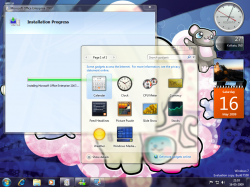
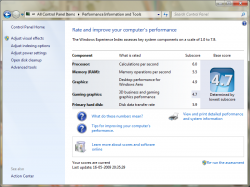
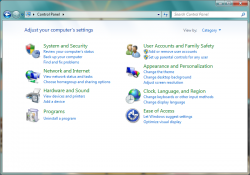
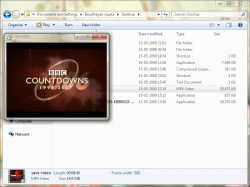
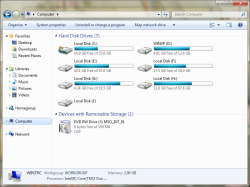
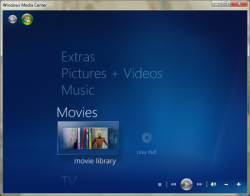
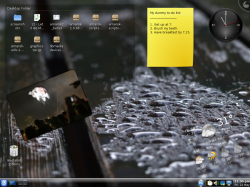
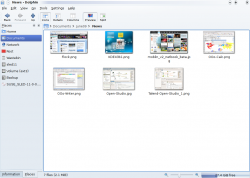
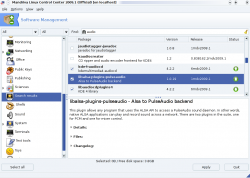
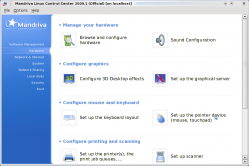
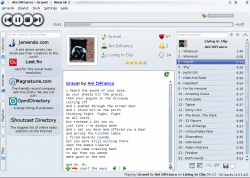
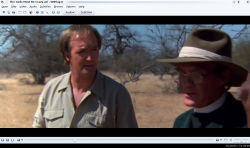
















Nice review.. Though I don't agree with many points. Hope you got my reply forwareded :P
Anyway few pointers.
1. Smplayer is available in FREE DVD, you just can't imagine the software libre it comes with it.. No no.. I am not talking about basic apps with De's .. Just look around the DVD again and you will find it.. It comes with VLC and plethora of other media players
Just add eh DVD as the main medium for repositories in case it failed to do .. Mandriva Control Center -> Manage repo .
2. Artwork in personal opinion but you seems to have chosen the wrong version. Mandriva didn't prioritize pimping the FREE edition. If you want a real test then either One or PWP edition should have been considered ..
Have you tried Bespin style for KDE ? I wonder whats holding mandriva back to create a new refreshing theme . Laora is history now :P
Anyway nice review once again.. Keep up the good work .
P.s : You forgot to mention the stepping of your processor :P
Boudhayan,
Good review. I have to agree with you on almost all points about Mandriva…being a MDV user for almost 5 years now. The Ia Ora theme is dated and they could go with something like Skulpture and/or Bespin as pointed out by one of the earlier posters..
I doubt if the Free versions ships with anything other than any Gstreamer-based video player. Totem's the only one I'm aware of. Smplayer and VLC…I doubt if any of them are in the Free or Powerpack Editions. You might want to visit http://easyurpmi.zarb.org and add the PLF repos to get full-fledged access to all patented stuff. This includes the Cleartype like font rendering which is disabled in the default MDV repos.
Good to see that MDV is getting some press in India..as a MUG (Mandriva User Group) Rep from India, I really really appreciate your effort in putting together this review. Many thanks!!
^^You have used mandriva for 5 years and you still haven't gone through the DVD .. Darn :|
Try checking the DVD again.. /media/cdrom/i586/media/contrib it has vlc and smaplayer both .. It even has elisa, atunes, ardour, audacious, avidemux, and plethora of other stuf..
How come you guys have not noticed it yet :|
Just add the DVD as main repo and once you did, the rpmdrake the add/remove in mandriva will always prioritize installing stuff from DVD instead downloading, just make sure the dvd image is either copied in the system or the dvd is inserted while installing :P
One thing I want to point out is that KDE 4.2.2 can be made to be absolutely jaw dropping. The customization options aren't as good as the 3.5.x series, but it makes Windows customization options look paltry. I just installed Mandriva 2009.1 Free 64 bit and it only took me a couple of minutes to change the Plasma theme, background, etc. to make my desktop to look good, and I'm pretty much a KDE 4 newbie (like KDE 3.5.x better) so I had to find my way around.
[…] https://www.opensourceforu.com/reviews/windows-7-vs-mandriva-2009/ […]
[…] This post was Twitted by motters […]
“The next screen threw up a surprise: it was meant to ask us whether to upgrade or perform a new installation. Typical of Microsoft confusion-creating terminology, the new installation option is called ‘Custom’. But accompanying it was a common Microsoft Bug—the upgrade option was enabled, and below it was clearly stated, “The Upgrade option is enabled only when you are installing Windows from within an Operating System that can be upgraded to Windows 7.”
This is not good piece of writing, Please moderate the content so that i does not look biased and one sided. This extract sounds ubsurd and the reader feels like the author is imposing his views on him/her.
Please dont make things “obvious” and be neutral in your approach. I am Linux user for more than 7 Years now and feel that a Lot of Indian community finds fun in bashing microsoft rather than improving the the quality of open source software we build.
@Shashwat: I personally keep distro hopping and don't stick with one for long. I get VLC from the online repos; never cared to check out the contribs on the DVD. Yeah, I use all the contribs I can get from the online repos. Artwork — after Win7 its a letdown. Looks do sell. Bespin? What the hell is that? I haven't really gotten hands on with KDE4 after this review. Waiting for KDE 4.3 (either an openSUSE DVD or the KDE4 Live CD that's become a regular with LFY). Perhaps you can enlighten us all on more holes that you find? Most appreciated :-)
@Anshul & @LinuxLover: Thanks! This really makes a writer's day! :-D
@Saurabh: Yeah, I may have been a bit too strong there, but Windows 7's Setup did annoy me a lot after Mdv's, if you know what I mean. And well, what's wrong in a bit of fun in bashing Microsoft? ;-)
umm… any writer typically “imposes his/her views” on the readers. It's up to the reader to take what all s/he thinks is worth it. :-) Likewise, its very difficult to write something which is not “biased” and completely neutral. How will you justify biasness? Read the scores of Vista reviews published all over the Web — most will typically compare it with XP, some with other operating systems. The moment you compare it with another OS, and note down flaws of the new system, you're basing your opinion on another system that you're familiar with. That's being biased. If I'm the manufacturer of the product, I can ask you: “Why can't you start getting used to the new way of doing the same thing instead of comparing?”
As for the fun part in bashing MS, well what's wrong with a little bit of fun?
Anyway, it's up to the readers to grasp the pun used in the paragraph you've quoted.
I don't beleive in inferior propritery versions of any tools which hides their implementations from the developers world. I strongly support Open Source and i beleive the quote “Human Knowledge belongs to world” Mandriva is rocking… Happy Linux Happy Tux.
People Lost their hope in the highway patrol(windows). The annoying WGA and loop holes in the security system and the vulnarabilities in windows pushing the users towards Linux and I am thankful to microsoft to get rid of windows for their loosy security whih pushed me towards linux. Since 1998 I am using linux along with windows and since 2006 i completely moved to Linux.
I don't beleive in inferior propritery versions of any tools which hides their implementations from the developers world. I strongly support Open Source and i beleive the quote “Human Knowledge belongs to world” Mandriva is rocking… Happy Linux Happy Tux.
People Lost their hope in the highway patrol(windows). The annoying WGA and loop holes in the security system and the vulnarabilities in windows pushing the users towards Linux and I am thankful to microsoft to get rid of windows for their loosy security whih pushed me towards linux. Since 1998 I am using linux along with windows and since 2006 i completely moved to Linux.
[…] 7 vs Mandriva 2009.1 Segunda-feira – 20, Julho, 2009 — Johnny O site Linux For You colocou frente a frente o Windows 7 e o Mandriva Linux, visando uma comparação superficial sobre […]
[…] Windows 7 vs Mandriva 2009.1 : https://www.opensourceforu.com/reviews/windows-7-vs-mandriva-2009/1/ […]
[…] Linuxforu.com přinesl zajímavé srovnání poslední verze Mandriva Linuxu a chystaných Windows 7. Z přímého srovnání vychází podle […]
You can run windows 7 on a pentium III comp with 96 MB of RAM and 1MB of video memory. Don't believe me check out the this link http://www.tinyurl.com/win7low
This is a highly biased review. Why do you think iPhone sells ? – Because it has got looks. Windows 7 beats mandriva hands down. You have rated mandriva higher than windows in multimedia capabilities which is grossly biased. It doesnt even ship with all the codecs and compared to it windows has Windows Media Center and coupled with win 7 codecs pack it easily beats mandriva. Regarding the functionality, windows 7 has a different philosophy and it is designed to be kept minimal. You can easily load windows with the gazillons of quality software – Nero, PowerDVD ships with every DVD player, Office suite – Office 2007 or OpenOffice.org and many others. Regarding the money concerns you can load open source
software you use in linux easily in windows. What matters is the looks and win7 has got it and functionality can be easily extended with open source or proprietary apps.
If you have a net connection installation of software is a cakewalk in Linux, but if you don't
life can be a dependency hell.
Regarding win7 being a memory hog, it doesnt matter. With prices of RAM falling every day, in 2-3 years memory usage of windows will look paltry. How about windows occupying
1 GB of total 12 GB ?.
Windows 7 is a beta product and it is supposed to have bugs. GNU/Linux doesnt have bugs but KDE 4 is full of them.
Final Judgement – GNU/Linux is superb – i am in love with it and i use it regularly. I am a tech enthusiast and you need a bit of it to be able to flirt with Linux. But the desktop environments leave much to be desired. KDE/GNOME don't really match up to windows 7.
I don't use windows but for those who just play games, watch movies, surf the net, edit with office and looks do matter and dont want the hassles associated with linux windows 7 is the best available option now and i recommend the investment in it.
But every geek worth his salt must definitely use Linux.
You can run windows 7 on a pentium III comp with 96 MB of RAM and 1MB of video memory. Don't believe me check out the this link http://www.tinyurl.com/win7low
“Pentium III-based system at a low 17 continuous hours. And the boot time? 17 minutes.”
Yeah right!
You can still run Linux on a 80386 with 4MB of RAM and 512K Video Memory. It's not a question of how low you can go, its a question of what's the minimum specs at which it is usable.
For me, no review is over till it discusses the gaming angle.
Linux loses out big time there :(
And thats why I like Windows…
[…] site Linux For You colocou frente a frente o Windows 7 e o Mandriva Linux, visando uma comparação superficial […]
I'd like to thank you for the very extensive analysis but there is one very basic matter which should be considered which is that a release candidate is one of many toned-down versions of an operating system. Thus comparing ANY RC of Windows with a full-fledged release oflinux is like playing rummy against someone with only 4 cards instead of the whole hand.
What is surprising is that the RC took a long time to install considering its RC nature.
Thus it would be safe to predict some problems with Win7 similar to Vista inline with the disk hogging it may do.
Wish I had more to contribute since I haven't been able to DL my own RC of Win7.
All in all good job but the article should have been postponed to Dec i.e. post the Oct 22 release of Win7 in full bloom.
yeah, but can you run kde 4.3 on the same hardware
Jmaster is absolutely correct about the multimedia part. After a quick codec pack install, Windows 7 is amazing for multimedia. Media Center is ridiculously good for something so easy to use and out-of-the-box. Are there other media centers that can do more? Yes. And I used to use them. But I’ll put it this way: the HTPC I’ve used for years to record HDTV and use to watch movies and all that…when I switched from XP to 7, I didn’t bother reinstalling my third-party HTPC software. I now just use 7’s media center. Again, it is indeed limited in certain ways, but Most people won’t run into that problem.
Good review.
video player: VLC. There is really nothing else that comes close.
KDE’s Dragon Player is great if you just want to view and nothing else but VLC is
really in a class apart.
peter street condos…
My close friend and I had been discussing about a problem related to Fight Club: Windows 7 vs Mandriva 2009.1 – LINUX For You Magazine ! Now I know that I appeared to be correct. Many thanks for the information you published….